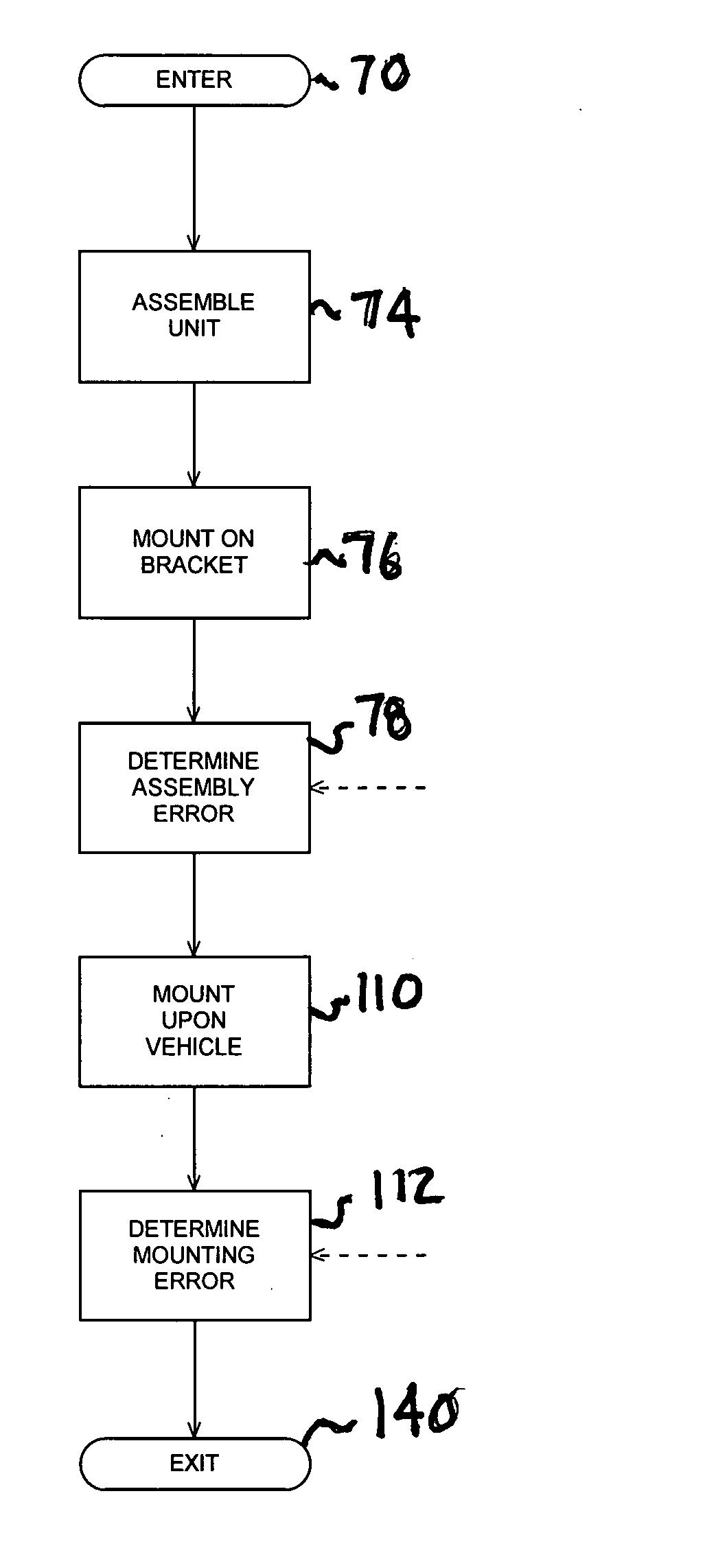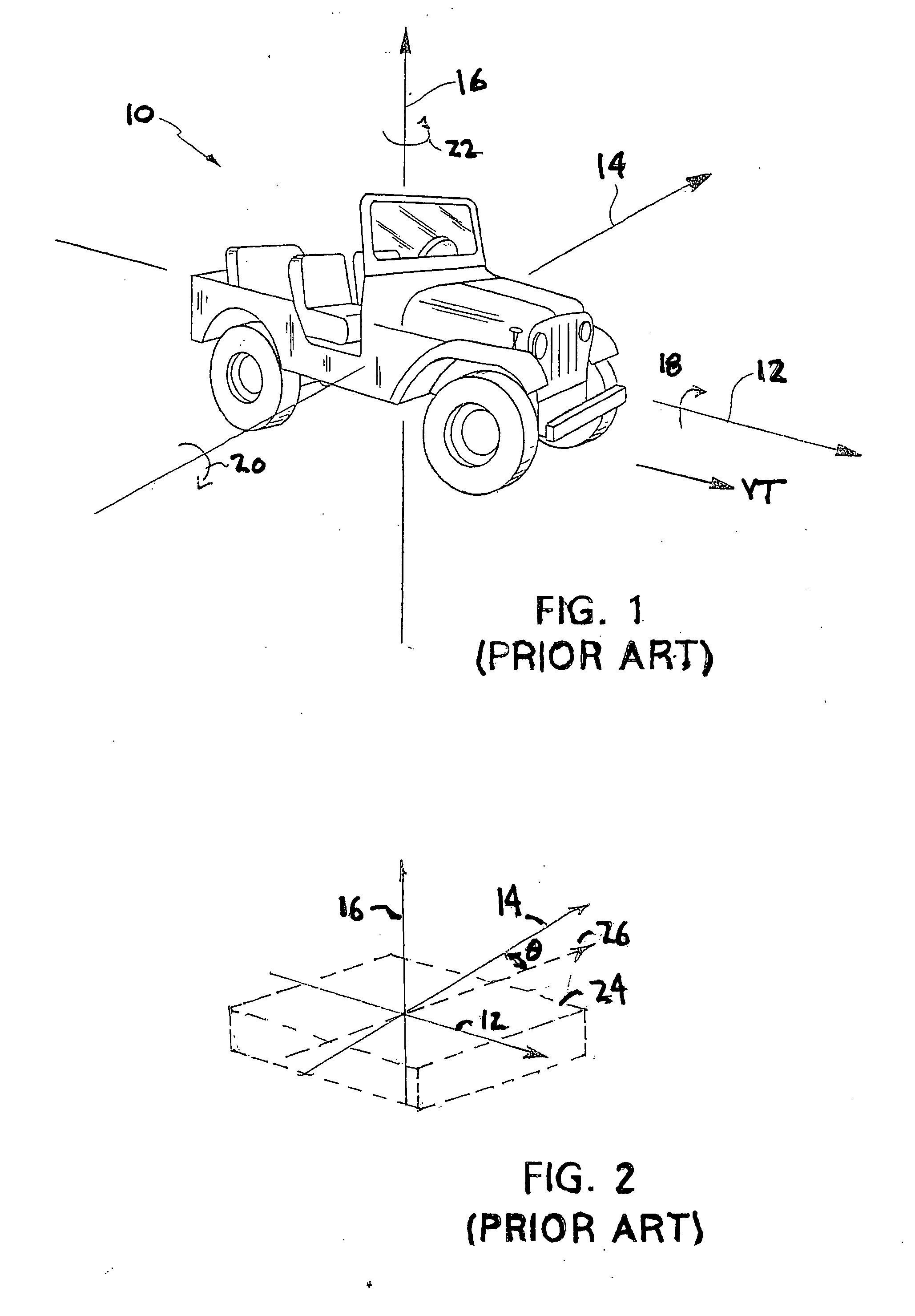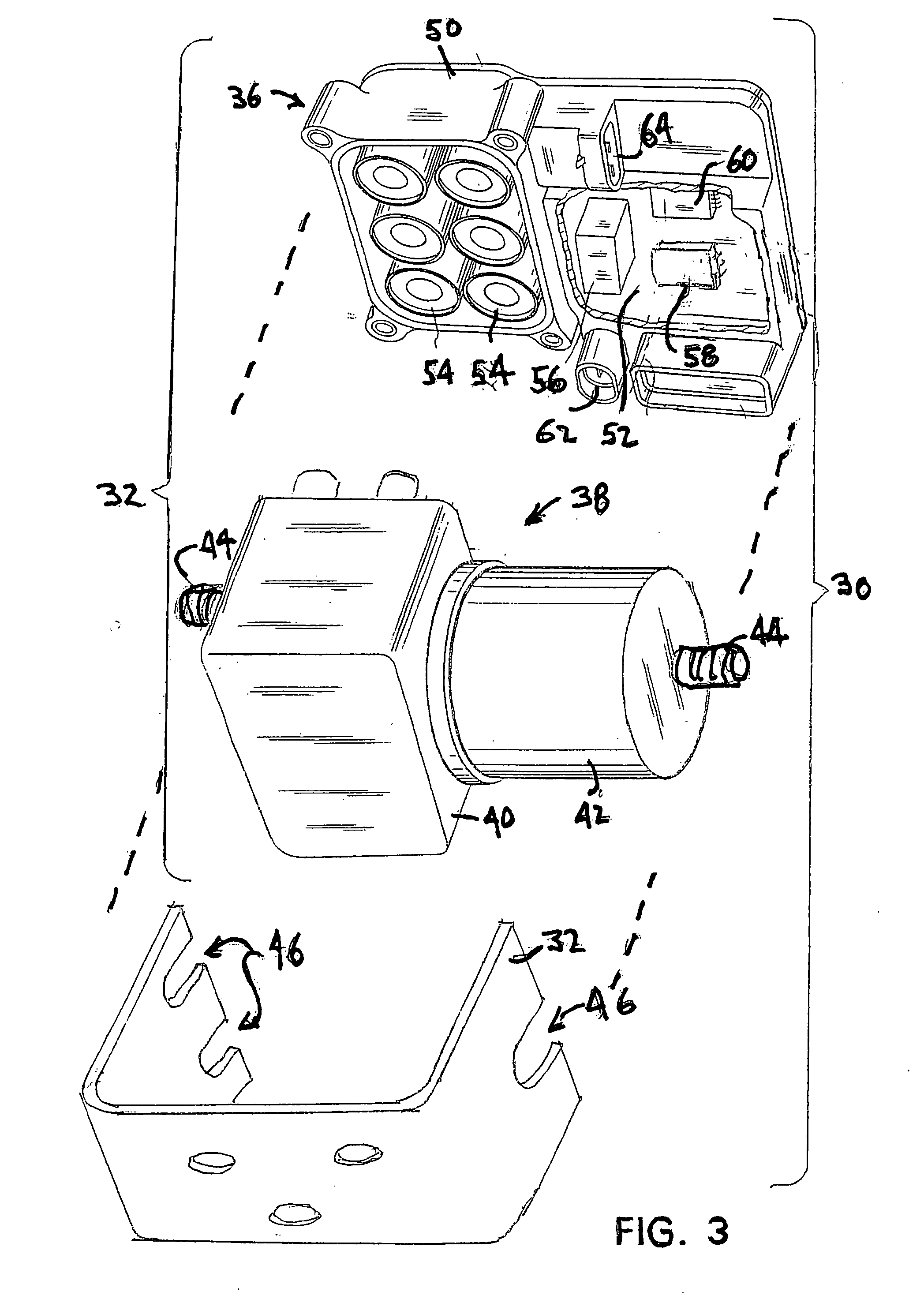Method for correction of inertial sensor mounting offsets
a technology of inertial sensor and offset, which is applied in the field of vehicle stability control systems, can solve the problems of inability to mount perfectly and store assembly errors, and achieve the effect of reducing cross-axis mounting errors
- Summary
- Abstract
- Description
- Claims
- Application Information
AI Technical Summary
Benefits of technology
Problems solved by technology
Method used
Image
Examples
Embodiment Construction
[0021] Referring now to the drawings, there is illustrated in FIG. 3 an exploded perspective view of a Vehicle Stability Control (VSC) System Control Unit assembly 30. The control unit assembly 30 includes hydraulic control unit 32 and a mounting bracket 34 for securing the assembly 30 upon a vehicle, such as the vehicle 10 shown in FIG. 1. The hydraulic control unit assembly 32 is comprised of an electronic control unit 36 that is removably mounted upon a hydraulic valve unit 38.
[0022] The hydraulic valve unit 38 includes a hydraulic valve body 40 upon which is mounted an electric pump motor 42. The motor 42 drives a hydraulic pump (not shown) disposed within the valve body 40. The pump provides pressurized hydraulic fluid to a plurality of solenoid valves (not shown) that are also disposed within the valve body 40. A plurality of ports (not shown) formed in the valve body provide a connection between the solenoid valves and components of the vehicle hydraulic brake system. In the...
PUM
 Login to View More
Login to View More Abstract
Description
Claims
Application Information
 Login to View More
Login to View More - R&D
- Intellectual Property
- Life Sciences
- Materials
- Tech Scout
- Unparalleled Data Quality
- Higher Quality Content
- 60% Fewer Hallucinations
Browse by: Latest US Patents, China's latest patents, Technical Efficacy Thesaurus, Application Domain, Technology Topic, Popular Technical Reports.
© 2025 PatSnap. All rights reserved.Legal|Privacy policy|Modern Slavery Act Transparency Statement|Sitemap|About US| Contact US: help@patsnap.com



